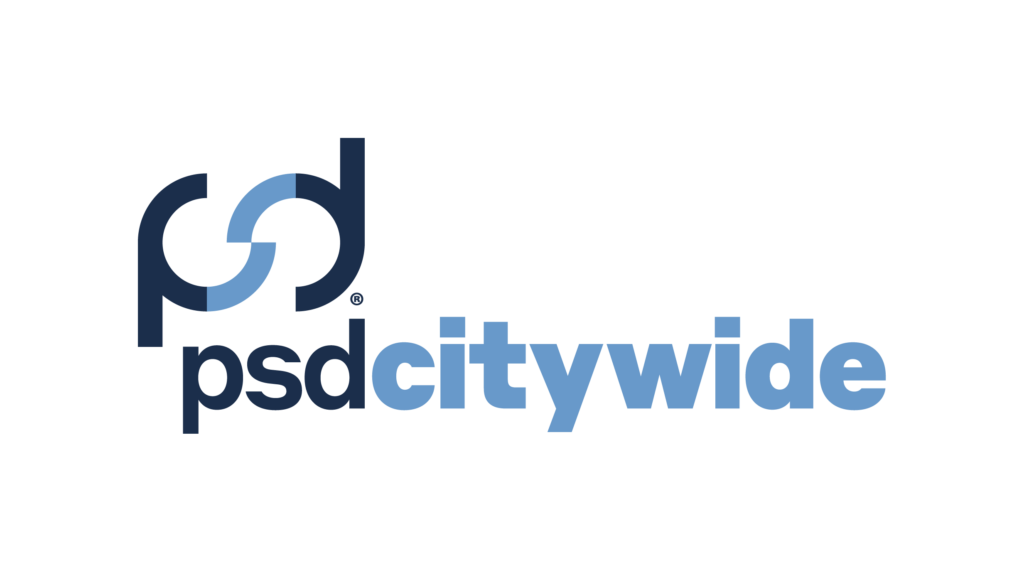By The Canadian Association of Municipal Administrators
The world is facing unprecedented times and it is uncertain how different everyday life will be as the world slowly begins to open again. The COVID-19 pandemic reached all segments and corners of the world, and in Canada, government was tasked with managing unparalleled challenges. As the federal government began grappling with border control and distribution of medical supplies, and the provincial government tackled laboratory testing and the management of public health, municipalities have been faced with ensuring that essential public services continue to be carried out and that the public feels safe in their own communities.
Municipalities plan for emergencies. However, existing emergency plans that prepared for different iterations of extreme weather events and cyber-attacks did not encompass a public health epidemic, and certainly not one of this magnitude. Chief Administrative Officers and City Managers, responsible to both the public and council for the execution of municipal operations, have had to adapt and utilize their expertise to spearhead the local response to the COVID-19 pandemic.
As both a trusted advisor to council and the coordinator of department heads, the CAO also has a distinct community leadership role, and providing strategic communication to all parties has been paramount during this time. Many of the decisions around the pandemic have local impacts. CAOs have been required to make tough decisions, with limited details and information that changes frequently, surrounding essential local services to the public. The role of the CAO has never been an easy one, but as this pandemic has and continues to emphasize, the role of the CAO is at its core one of resilience and leadership.
Through conversation with Board Members of the Canadian Association of Municipal Administrators (CAMA), a national organization comprised of Chief Administrative Officers/City Managers and those employed in a senior management position that report directly to a CAO, PSD gathered insight into the experiences of CAOs and City Managers across the country since the COVID-19 pandemic began. One thing is for certain: municipalities are all facing similar challenges and innovative solutions are being made.
We hope these conversations serve as a resource for your municipality to consider. After all, we are all in this together.
1. What was your first order of business as CAO when your Province announced Declarations of Emergencies to mitigate the effects of COVID-19?
Since the very beginning of the COVID-19 pandemic, it was imperative that municipal leaders come together to identify a clear path for both staff and citizens. The majority of CAOs and city managers indicated that a key priority was to bring together their senior management teams and to establish and or enforce their Emergency Operations Centre (EOC). Many shifted to daily meetings to discuss progress and communications from the federal or provincial governments to ensure alignment.
Marc Landry, City Manager for the City of Moncton, New Brunswick explained, “It was very important to mobilize our senior management and the emergency command centre teams, putting those groups together and starting to focus on this unique situation.” The EOC has been essential for municipalities as it has allowed for streamlined communications and for municipalities to prioritize resources to the protection of citizens, essential workers and vulnerable communities such as those living in long-term care.
Education was a key component of communication. Dawn Chaplin, CAO for the Town of Torbay, Newfoundland and Labrador, referenced the initial requirement that both internal staff and the public were well-informed about the COVID-19 strain and the precautions to take to contain the spread.
Along a similar vein, like many other businesses across Canada, CAOs and city managers had to ensure the safety of their internal staff by putting in place social distancing measures.
Mike Dolter, CAO for the Town of Truro, Nova Scotia explained, “We immediately enacted our personnel plans that were designed to protect our essential staff, establish work practices in line with provincial direction, and allow staff that could work from home to do so. We also closed or restricted access to our public spaces and buildings to enforce social distancing requirements.”
Ensuring the well-being of internal staff was a common sentiment throughout the conversations, highlighting how a CAOs responsibility is beholden to both the municipality and their internal staff, a responsibility that is accentuated during this pandemic. Jack Benzaquen, CAO for the City of Dollard-des-Ormeaux, Quebec, commented, “The biggest challenge for me was to take the time to see each employee’s personal challenges because of the pandemic. For example, some had families to take care of. It became important to find a time where everyone would be available for team meetings.”
The biggest challenge for me was to take the time to see each employee’s personal challenges because of the pandemic. For example, some had families to take care of. It became important to find a time where everyone would be available for team meetings.
In addition to being informed about the COVID-19 strain and implementing initial social distancing measures, priority was also to ensure frequent communication on what steps the municipality was taking on restrictions and closures and on what COVID-19 was and the potential health impacts. Brenda Orchard, CAO for Lennox and Addington County, Ontario, explained that they included several stakeholders in their meetings and communications including the four lower tier municipalities, as well as representation from the local hospital, public health officials, and the Ontario Provincial Police (OPP); “We are sharing best practices and coordinating political decisions, which is important in a two-tier structure as well as issuing joint coordinated communications.” The inclusion of important stakeholders from across the county ensured that the messaging was consistent from all levels and areas of authority.
Overall, the majority of CAO’s have expressed that while they have had to be flexible and prepare plans quickly, their teams have been collaborative and up to the challenge, doing everything they can to ensure the safety of their citizens.
2. How have your responsibilities as CAO changed over the last number of weeks during this pandemic?
The COVID-19 pandemic has impacted the delivery of all municipal services in some way. Jake Rudolph, CAO for the City of Nanaimo, British Columbia found that he “was completely dedicated to the pandemic and [its] impacts on the organization” during the second half of March, since “virtually all other matters were suspended, including Council meetings.” In many cases, the CAO also acts as the Emergency Operations Centre (EOC) director. Beverly Hendry, CAO for the Township of West Lincoln, Ontario highlighted that this is an emergency situation that many have never practiced or planned for, therefore requiring significant collaborative thinking and problem solving.
The sentiment of collaborative discussion, open communication, and knowledge sharing was shared amongst all respondents. Staff are running on different schedules working from home and/or in the offices, new information on the virus and its spread is constantly emerging, and the timelines are unpredictable.
To further ensure that operations continue in the new environment, Mike Dolter, CAO for the Town of Truro, Nova Scotia, noted that there has been a greater focus on employee wellness through regular meetings with senior staff to ensure that they are coping well and able to maintain their personal and organization health. Tony Kulbisky, CAO for the Town of Devon, Alberta pointed out that “ultimately its focused on communications at all levels internally and externally. There’s lots of information out there in social media world. The key was to be consistent and timely.”
Brenda Orchard, of Lennox and Addington County, Ontario pointed out that “in many ways the responsibilities have stayed the same.” Orchard noted that even though the scope of their responsibilities has altered and there is more weight added to their decisions, their role continues to consist of “encouraging and supporting Directors to achieve their departmental goals and providing advice to Council.” Nearing the end of May, the responsibilities of the CAO are still evolving as the environment continues to shift and they are only now transitioning into a more regular pattern.
3. What has the dynamic been between your role as CAO and council during the pandemic?
It is important now, more than ever, to maintain a collaborative relationship between CAO/city manager and council. The critical role of CAO/city manager and staff is to keep council informed and operate with complete transparency. Marc Landry, City Manager for the City of Moncton, New Brunswick noted that “when the pandemic started, [they] were updating elected officials twice a day,” they also ensured “that everyone had clarity around their roles and responsibilities in the decision-making process.”
Many municipalities in Canada were required to suspend council and committee meetings during the beginning of the pandemic to limit public gatherings. To make up for the meetings, CAOs/city managers have scheduled regular communication with their mayors and council; in some cases, every day or once or twice a week depending on the elected officials’ requests. Dawn Chaplin, CAO for the Town of Torbay, Newfoundland and Labrador, mentioned that they were hosting more frequent Committee of the Whole meetings and that there has been an increase in email communication since the pandemic started.
Jack Benzaquen, CAO for the City of Dollard-des-Ormeaux, Quebec reiterates that “The overall dynamic was to keep the mayor informed. I am having a daily conversation with him, so that he may in turn keep the councillors up to date. I have also had to impress upon the mayor the importance of having only one line of communication, through me, so that Senior Managers are not confused or overloaded by requests.”
Of course, meetings that required gathering of large groups have needed to be modified. Meetings have been hosted and attended on a virtual format, seating for in-person meetings is altered to allow for physical distancing, or a combination of both approaches have been taken. In some cases, municipalities needed to invest time and funds into setting up new technology to facilitating working from home and running virtual meetings.
Scheduled meetings may not have taken place as planned, but there was a significant increase in communication between CAO/city manager and council to ensure that the elected officials were well informed. The respondents emphasized their appreciation for the support from their council and mayors throughout the pandemic. The elected officials have made significant efforts to cooperate with their CAOs/city manager and municipal staff despite the shifting environment.
4. How has the coordination between department heads changed during the pandemic to ensure the continued maintenance and function of municipal operations?
One of the fundamental responsibilities of CAOs is to coordinate the activities of department heads. The criticality of information sharing was unanimous among CAOs, stressing that any decision made during the pandemic can impact other areas of an organization. As communication with elected officials needed to increase in frequency, the same was true with department heads.
Jake Rudolph, CAO for the City of Nanaimo, British Columbia, provided an example of how accommodating and sporadic meetings among senior management had to become to ensure that senior management was best informed.
He stated, “For the first two to three weeks, the Senior Management Team met twice daily, then once a day for the next two to three weeks and now once a week.” And as noted by Tony Kulbisky, CAO for the Town of Devon, Alberta, this increase in virtual communication has become all-consuming: “Microsoft teams, email, cell phones, and Zoom are daily tools used several times a day.”
Dawn Chaplin, CAO for the Town of Torbay, Newfoundland and Labrador faced a unique challenge as a result of the severe snowfall in the province. In January they declared a state of emergency; the beginning of the COVID-19 pandemic in Canada coincided with the debriefing of a snowfall emergency plan. Quickly shifting the focus onto a new challenge, their already frequent meetings were altered to allow for physical distancing. Chaplin stated that they had to work together to “empower the use of technology to support operations” and ensure safe work practices were in place.
I know I can rely on my team to support me and they know they can rely on me to support them. That makes dealing with this pandemic much easier from a mental health and stress perspective as well as from an operational perspective.
Mike Dolter, CAO for the Town of Truro, Nova Scotia emphasized that cooperation and coordination between departments has always been a priority. During a pandemic such as this, the priorities do not change but different strategies are required to maintain the desired levels of service.
For example, Brenda Orchard, CAO of Lennox and Addington County, Ontario, applauded the efforts made by library staff to facilitate family visits. Since family members are not able to enter nursing homes, “library staff are facilitating Zoom meetings between residents and their families, taking residents to window areas set up for “window visits”, engaging residents with virtual reality tours using VR headsets and doing other traditional activities such as talks, walks, reading, bingo etc.”
In a changed environment, staff have embraced their new assignments and adapted to the new rules for safe operations.
Attention has now turned to managing the reopening of the economy and the lessening of physical distancing restrictions. Marc Landry, City Manager for the City of Moncton, New Brunswick succinctly concluded that as they transition back to regular services “whether it is the opening of City Hall, allowing council to be physically back in council chambers, or opening some of our facilities, having everyone at the table is critical as any decision can impact other areas of the organization.”
5. What is the biggest challenge facing a CAO during a time of a crisis or pandemic and what tools/resources do you have available to you to overcome such challenges?
The ability to be resilient in the face of challenges and to provide innovative solutions are two attributes common among CAOs and city managers. The job of a CAO/city manager is all-consuming and adapting to different stressors is paramount to ensuring that local essential services continue to be upheld.
Many stakeholders in the community depend on the CAO/city manager to make decisions and is most commonly the point person for information. Tony Kulbisky, CAO for the Town of Devon, Alberta said that maintaining composure and keeping a sense of humor has been instrumental during this time.
One of the biggest challenges cited among the interviewed CAOs/city managers was having to make decisions with limited information and with short timelines.
For example, Mike Dolter, CAO for the Town of Truro, Nova Scotia, described the challenges of information sharing that the Town has worked to overcome: “In rural areas, we are more reliant on social media to get our message out because many of the daily newspapers have either gone weekly or ceased to cover local stories. The problem becomes even more complex based on demographics, where because of age or financial situation some residents may not use or have access to social media. We are shifting some of the messaging to radio to ensure that we reach these people as well.”
Beverly Hendry, CAO for the Township of West Lincoln, Ontario elaborates “My playbook relies on trust in self and others, collaboration, courage and gratitude. My local, provincial and national networks have been the best resources. It’s been very important to keep these lines of communication open.”
Another challenge reported by CAOs, and certainly a common theme among many workers during this time, is the transition to working from home. Technology has been an important resource that enabled regular meetings and for CAOs to check in with their staff, both for professional and personal purposes. By extension, having a reliable team was one of the most cited resource by CAOs. As Brenda Orchard, CAO for Lennox and Addington County, Ontario shared, “I know I can rely on my team to support me and they know they can rely on me to support them. That makes dealing with this pandemic much easier from a mental health and stress perspective as well as from an operational perspective.”
6. What are you doing as a CAO for your own mental health and self-care?
Significant attention has been shed on mental health and self-care during the COVID-19 pandemic – and for good reason. Both personal and professional life have dramatically changed, and with uncertainty around whether and when life will go back to “normal,” this change is undoubtedly overwhelming. Coupled with the challenges outlined in the preceding questions, this is a difficult and demanding time for CAOs and city managers.
To alleviate stress, many shared that staying active was one way to prioritize self-care, along with staying connected with friends and family. Jake Rudolph, CAO for the City of Nanaimo, British Columbia shared that “I am a runner and this is good both physically and mentally. This has been a very stressful period but keeping in touch with my peers has been very important.”
Beverly Hendry, CAO for the Township of West Lincoln, Ontario, explains “There have been times where I felt isolated and frustrated, and then I focus on the things I am grateful for and, frankly, solutions that I can deliver. That success gives me the energy to get back to the more intractable problems.”
Jack Benzaquen, CAO for the City of Dollard-des-Ormeaux, Quebec, commented on his intake of media as it relates to mental health. He noted, “I have chosen to limit my media intake to just listening to the daily provincial press briefings and reading the major newspaper.” The notion that the media and the unlimited circulation of COVID-19 related information is burdensome is one that resonates with populations across the globe. No matter what lies ahead, prioritizing mental health will be the cornerstone of being resilient in the face of this pandemic. That, and having our local communities to depend and lean on. We can thank our CAOs and City Managers for the latter.
The Canadian Association of Municipal Administrators is proud to represent over 650 senior municipal managers across Canada gain insight into issues that matter and have a united voice. Building upon that professional base, CAMA’s primary role is to champion excellence in municipal administration. This is done by providing its members with opportunities to develop their personal knowledge and skills in best serving the public; and assist members with building a culture of service within their communities. During this unparalleled time, CAMA is able to help administrators focus on emerging issues and best practices to stay ahead of the curve. Two new resources available include Political Acumen Toolkit and our CAO Performance Evaluation Toolkit.



